PUBLISHED
August 03, 2025
KARACHI:
On July 24 2025, news broke out that professional wrestling legend Hulk Hogan had untimely passed away at the age of 71, having suffered a cardiac arrest at his Florida residence.
What followed, however, was a mixed reaction to the news.
To put it mildly, Hogan (real name Terry Bolea) leaves behind a complicated legacy, marred by his actions both inside and outside the squared circle.
From body-slamming the 500-lbs Andre the Giant in front of a (disputed) crowd of 93,000, to bankrupting Gawker, all the way to his all-too-vocal support for MAGA and US President Donald Trump, Hogan’s lasting legacy on pop culture in North America is unquestionable.
His larger-than-life persona has left an indelible mark on professional wrestling, media, and wider pop-culture, shaping how wrestling is viewed globally today.
Early days wrestling on the regional scene
Bolea was born in Augusta, Georgia, on August 11, 1953. He started professional wrestling training at the ripe age of 16, followed by his in-ring debut in 1977. Hogan started his career wrestling on the regional scene in Florida.
Professional wrestling back-then was far removed from the global spectacle it would soon become. Back then, wrestling was more of a regional scene, with each region being considered its own territory (i.e. a separate ‘WWE’ in different states).
Having gained enough experience in the ring, Hogan was introduced to then-WWF promoter Vince McMahon in the fall of 1979.
Over the course of the next decade or so, the two would go on to redefine professional wrestling not only in North America, but throughout the globe.
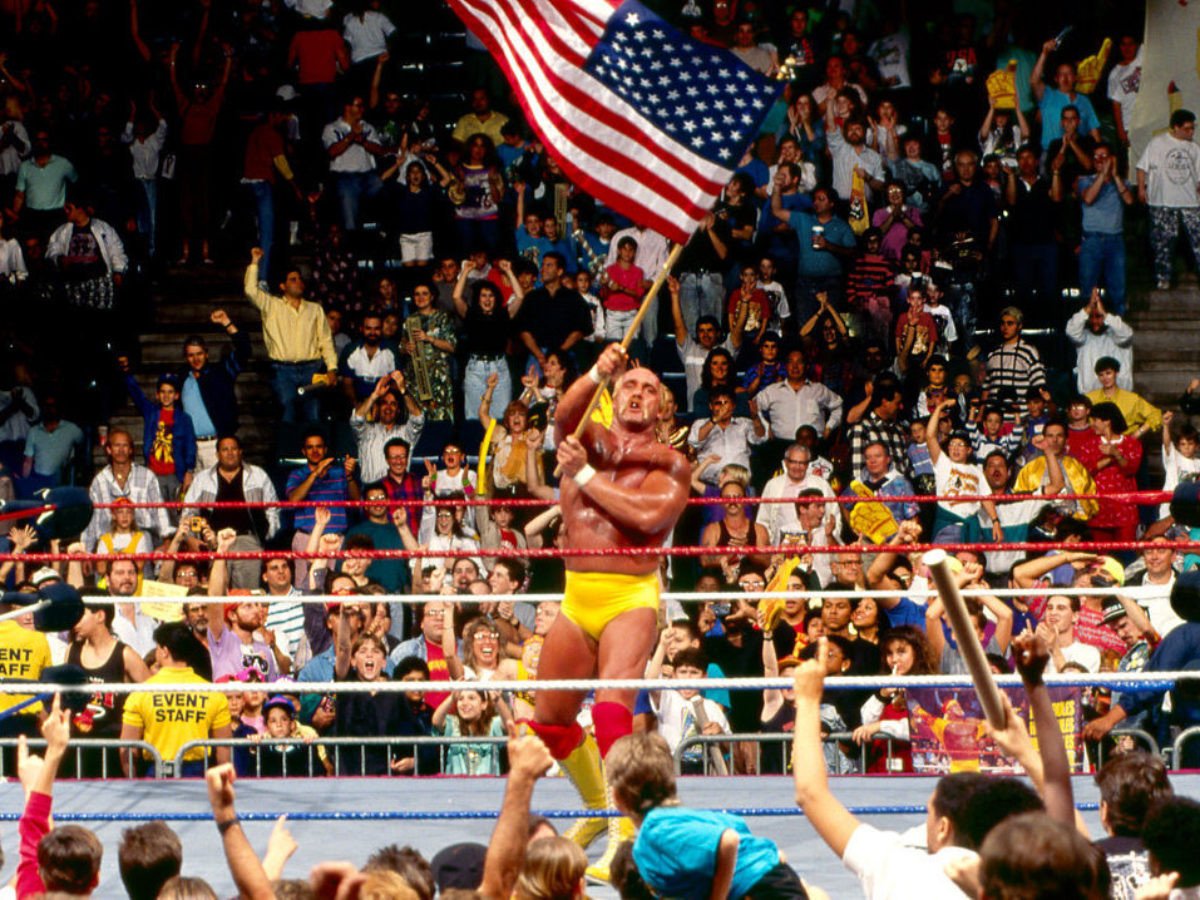
HulkaMania and the face of WWF in 1980s
Hogan’s charisma and physical stature made him stand out in an era where wrestlers were larger-than-life characters. It was his gift of charm which would help establish Hogan as the undisputed face of the WWF, and professional wrestling as a whole, throughout the 1980s.
His on-screen persona of the all-American, white-meat baby face was one of the hottest things North American pop-culture had seen until then. Sea of crowds would come to see the ‘Hulkster’ perform for the masses. It was his undeniable popularity that ushered in what’s now called the ‘Rock ‘n’ Wrestling Era’ of the 1980s, where professional wrestling boomed in popularity.
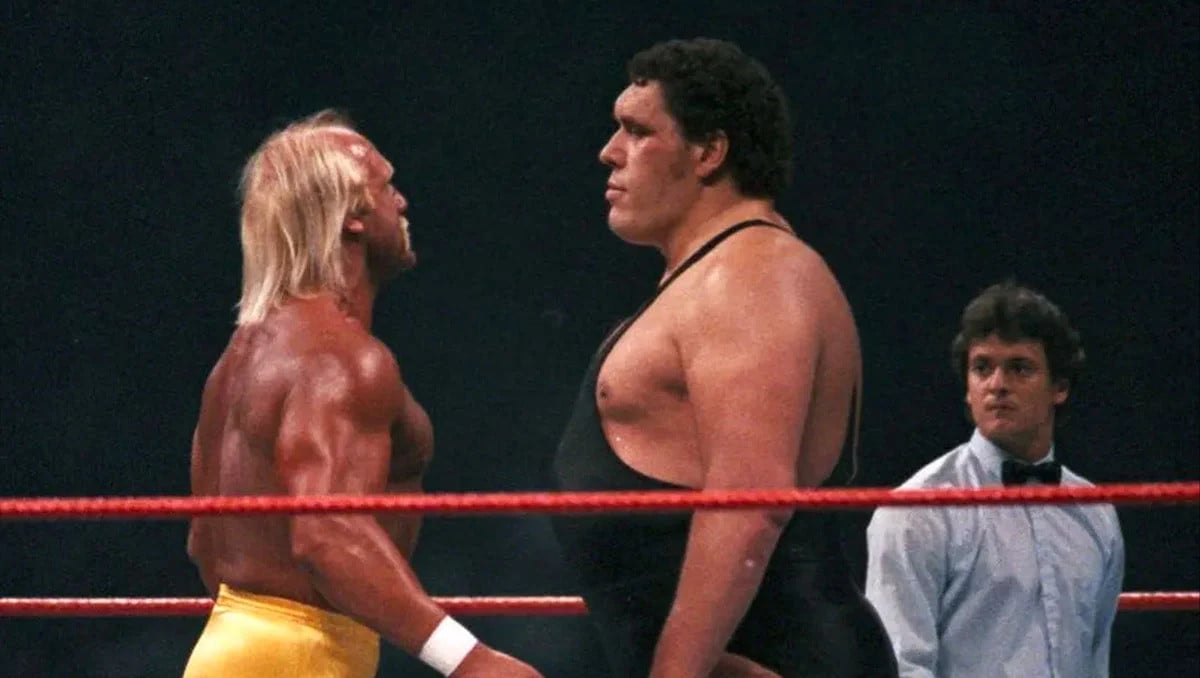
A good example of Hogan’s popularity lies in his match against Andre the Giant on WWF’s ‘The Main Event’ in 1988. A record audience of 33 million viewers tuned in to see the Hulkster body-slam the Giant. The broadcast also turned in a 15.2 Nielsen TV rating, which stands to this day as an American television record for a professional wrestling event.
So significant was Hogan’s popularity that he would go on to main event WrestleMania, the biggest professional wrestling event of the year, eight times out of the first nine editions. It would earn him the nickname of ‘HulkaMania,’ which remained synonymous with Hogan throughout the rest of his career. Hogan also held onto the WWF Championship for a consecutive 1,474-day, which, to this day, is the second longest title reign in the company’s entire history.
Hogan’s message of ‘saying your prayers’ and ‘eating your vitamins’ struck a chord with young audiences, many of whom grew up with Hogan as their role model.
Behind the scenes, however, it is clear that Terry Bolea was quite different.
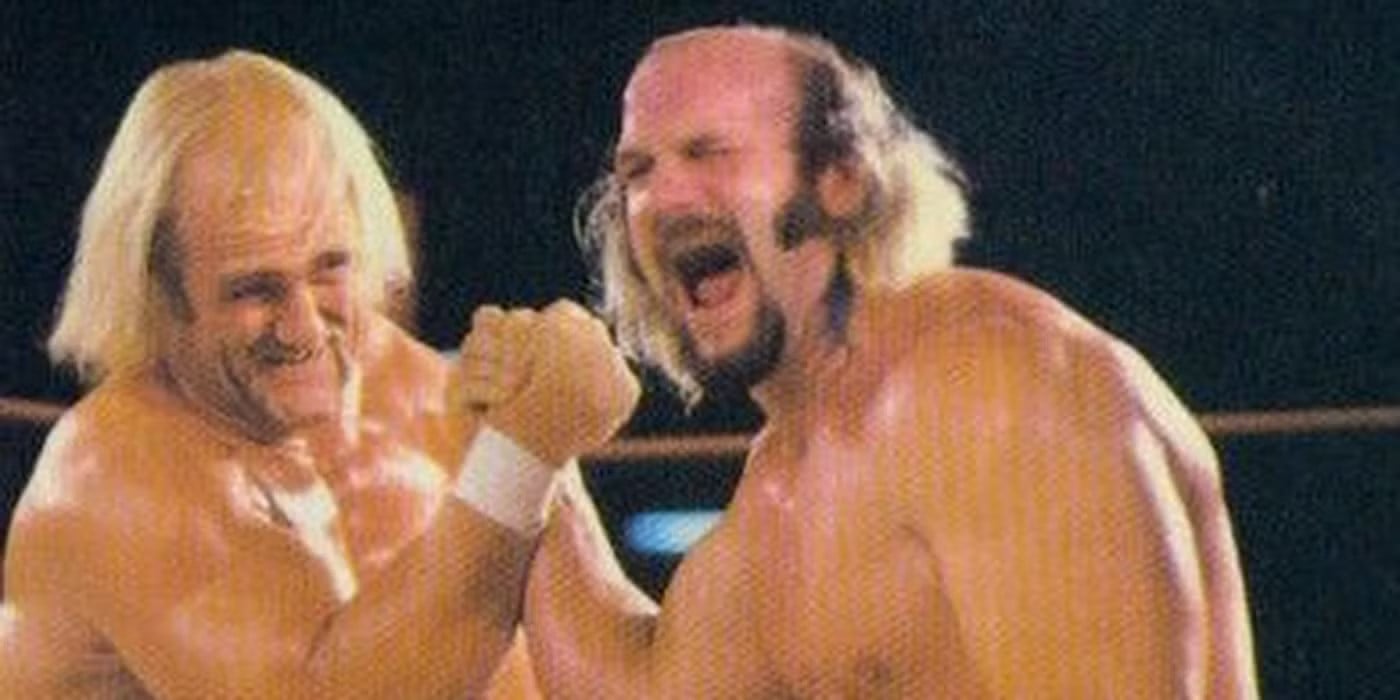
Feud with Jesse ‘The Body’ Ventura
Bolea’s feud with former Minnesota governor Jesse ‘The Body’ Venture is infamous. The two were colleagues and, in Ventura’s own words, very close friends who shared an on-screen rivalry in the 1980s. Behind the scenes, however, the two would soon come to blows.
Back in the 1980s, professional wrestling was quite different than the global spectacle it has become today. Wrestlers were paid a daily wage, had to work an extensive schedule, and would often be away from their homes for months at a time. The wrestling business back then was also infamous for its rampant use of drugs and anabolic steroids, which would go on to cause the premature deaths of many wrestlers from the 1980s.
Simply put, the physical strain on their bodies was too much for some wrestlers, even if they would get the adulation from the crowd. The ‘tough-guy’ image was too important to protect, however, and many wrestlers would compete injured.
In the midst of this, Ventura would go on to try and unionise the professional wrestlers in 1986. At the time, unions in America were facing declines, which prompted Ventura to try and unionize the wrestlers before it was too late.
It was later revealed, however, that Ventura was ratted out to Vince McMahon by none-other than the Hulkster himself, curtailing any talk of unionisation. Ventura would later go on to claim Hogan was the highest-paid wrestler on the roster and made more money than the rest of the wrestlers combined.
It would not be Hogan’s last controversy.
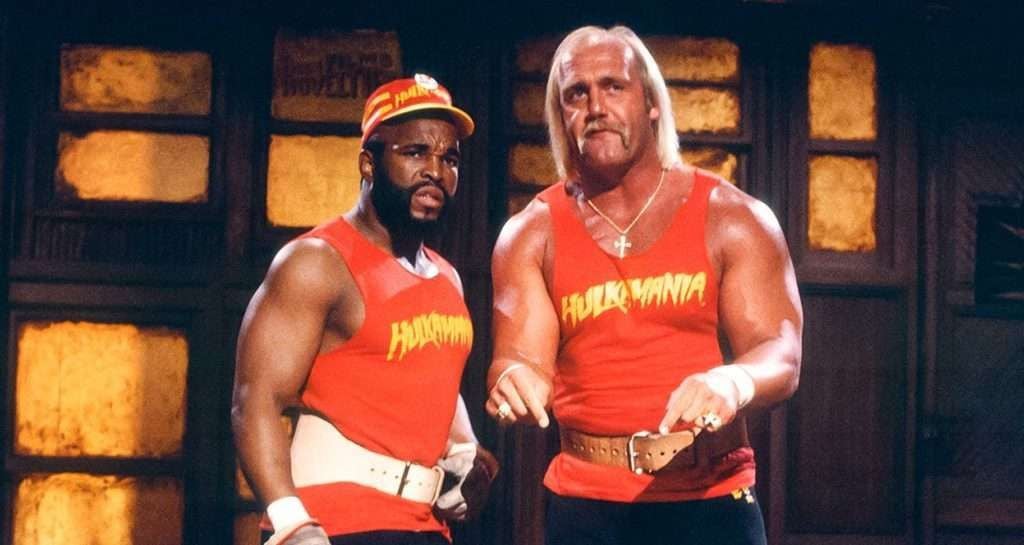
Appearance on Hot Properties with Richard Belzer
One of the most notable controversies involving Hogan occurred in 1985, just before the inaugural WrestleMania, when Hogan appeared on the talk show Hot Properties with Richard Belzer. After being repeatedly goaded by Belzer, Hogan performed a guillotine choke on the host, causing Belzer to pass out.
When Hogan released the hold, Belzer fell to the floor, injuring his head, which required medical attention. Belzer later sued Hogan for $5 million, and the case was eventually settled out of court.
Hogan later claimed that half of the settlement was paid by himself and the other half by WWE’s Vince McMahon. However, Belzer himself later suggested that the real settlement amount was closer to $400,000. This incident drew criticism, especially regarding the safety and ethics of performing a wrestling move in such an uncontrolled environment.
https://www.youtube.com/watch?v=i7n_SHrK408
Anabolic Steroids and Arsenio Hall
Professional wrestling in the 1980s and 1990s was doused in a culture of using anabolic steroids. It led to an infamous lawsuit and subsequent trial of WWF owner Vince McMahon in 1994, with Hogan playing a central role in McMahon’s eventual acquittal by the US government.
Hogan’s 1991 appearance on The Arsenio Hall Show became one of the more infamous moments in his career, particularly in relation to the ongoing steroid controversy. During the interview, Hall directly asked Hogan about the growing allegations of steroid use in professional wrestling, a topic that had already begun to surface in the media.
In response to Hall’s questioning, Hogan vehemently denied using steroids. He claimed that his physique was the result of hard work in the gym and a disciplined lifestyle. Despite the rising public scrutiny, Hogan attempted to maintain the “clean-cut” image of the All-American hero that had helped propel his career in wrestling.
https://www.youtube.com/watch?v=W-RggiPU2xQ
However, the interview marked a turning point. The wrestling world, already grappling with the implications of steroid use, would later see Hogan’s public denials clash with the reality of his testimony during the trial of Vince McMahon in 1994.
During the trial, Hogan, who had been granted legal immunity, testified in McMahon’s defence regarding the use of steroids within the company.
Under oath, Hogan admitted to using anabolic steroids since 1976 but clarified that McMahon had neither provided the drugs nor encouraged their use. This testimony was pivotal in undermining the government’s case against McMahon, which ultimately led to McMahon’s acquittal.
Hogan’s admission of steroid use and his testimony further complicated his image in the public eye. It was seen by many as a betrayal by the Hulkster, who had always claimed he maintained his physique through natural supplements.
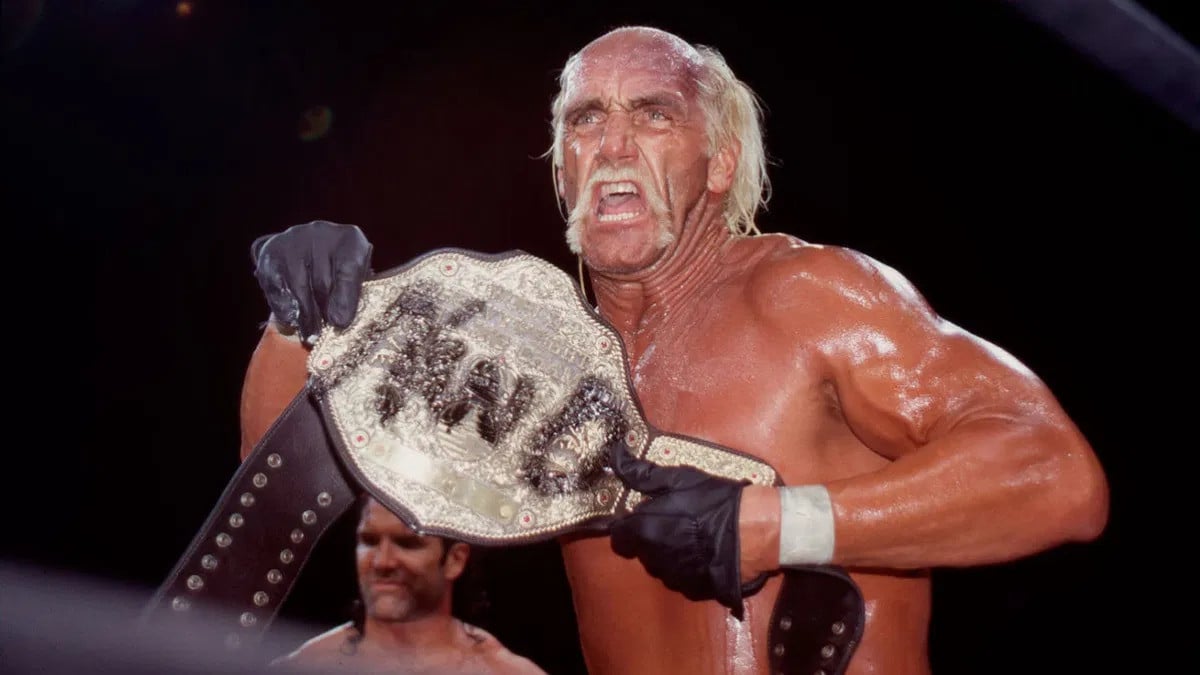
WCW: Resurgence and the ‘nWo’ in 1990s
After facing a period of decline in his popularity in the early 1990s, Hogan quit the WWF to pursue a movie career. He would go on to appear in critical flops like Mr Nanny, Suburban Commando, and The Secret Agent Club, effectively killing his career as a film star before it could get underway.
It was on the set of one of his movies where Hogan would be introduced to then-WCW President Eric Bischoff, setting the stage for a sensational return to professional wrestling at WCW, WWF’s then chief competitor. Hogan’s deal, at the time, was the most lucrative professional wrestling deal ever signed, which saw him gain total ‘creative control’ over his on-screen character.
Combined with Bischoff’s idea of a more ‘realistic’ take on wrestling, Hogan would soon usher in what is widely considered the most popular era of professional wrestling; the Monday Night Wars.
Ditching his traditional yellow-and-red tights for the new-look black-and-white with an attitude, Hogan would turn his back on his fans and embrace the ‘NWO.’ His heel turn at WCW Bash at the Beach 1996 remains, to this day, the most controversial and unexpected in professional wrestling history, garnering rave reviews from veteran journalists such as Dave Meltzer.
The Hulkster, now going by ‘Hollywood’ Hulk Hogan, was back to the very top of professional wrestling. The resurgence in his popularity in the mid-90s led to WCW temporarily overtaking WWF as the premier wrestling company in the US in the late-90s, with Hogan at the forefront as the face of both WCW and the NWO.
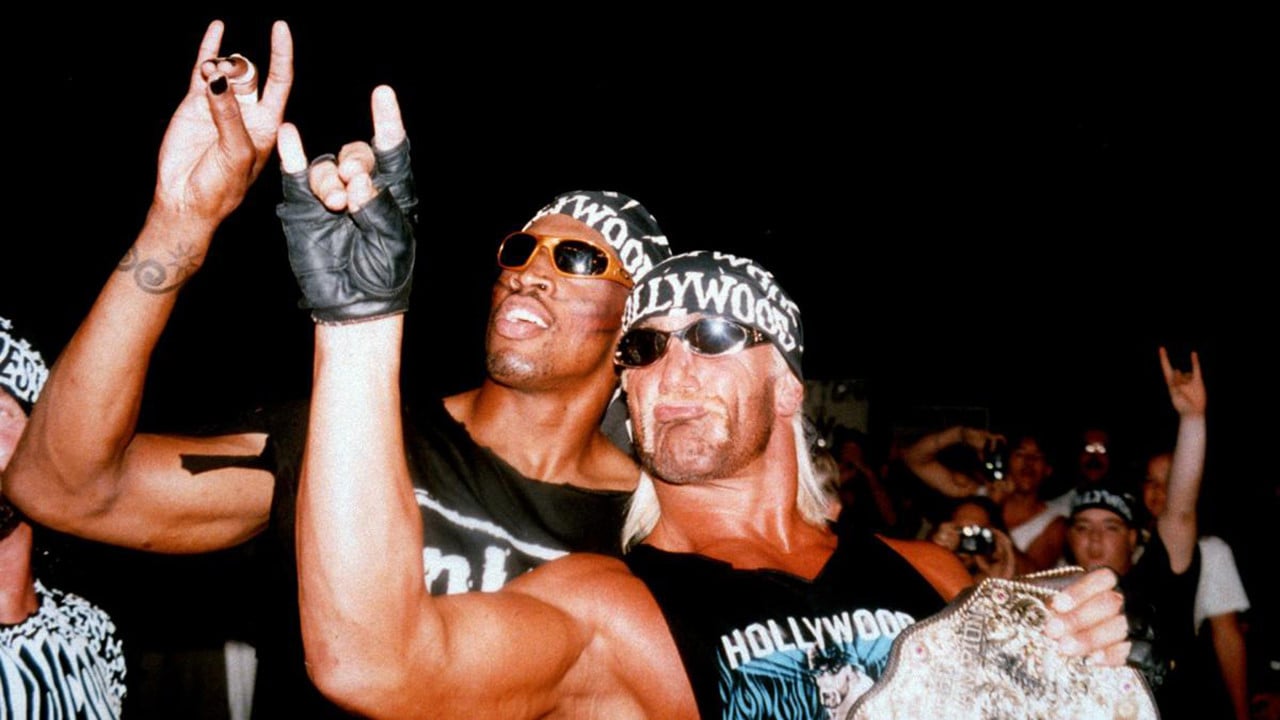
His time at WCW, however, was marred by a range of controversies that, in one way or the other, contributed to the company’s untimely closure and subsequent purchase by WWF in 2001. Hogan’s creative control led to him deciding the outcome of many matches, with his frequent title reigns in WCW, especially during the late ’90s, seen by many as a way for the company to keep him at the top, despite the rise of younger stars.
Fans and wrestlers alike complained that WCW was focused too much on Hogan rather than elevating fresh talent. The NWO was incredibly popular but also overused, leading to complaints about WCW relying too heavily on Hogan and the faction. Some critics felt that the overemphasis on the NWO and Hogan’s involvement in nearly every major storyline hurt the development of other talent.
Hogan was also often accused of having too much creative control over his character and storylines. Rumours circulated that Hogan had the power to veto any booking decision he disagreed with, leading to backstage tensions and frustration among some of WCW’s other top stars, including Randy Savage, Sting, and Ric Flair.
His departure from WCW was the epitome of his run in the company; In July 2000, Hogan’s return to WCW was marred by a controversial incident at Bash at the Beach. Scheduled to face Jeff Jarrett for the WCW World Heavyweight Championship, Hogan and WCW writer Vince Russo had a backstage dispute. Hogan wanted to win the title, but Russo planned for Jarrett to retain and later lose it to Booker T.
In the match, Jarrett unexpectedly lay down, and Russo instructed Hogan to pin him. Confused, Hogan complied, but then publicly criticised Russo for the situation, claiming it was part of the reason WCW was struggling. Russo angrily declared it would be the last time fans would see Hogan, revealing that Hogan had a “creative control” clause that allowed him to dictate his own storyline. This led to a defamation lawsuit from Hogan, which was eventually dismissed in 2002. Russo claimed the whole incident was scripted, while Hogan believed it was unscripted. This marked Hogan’s last appearance in WCW.
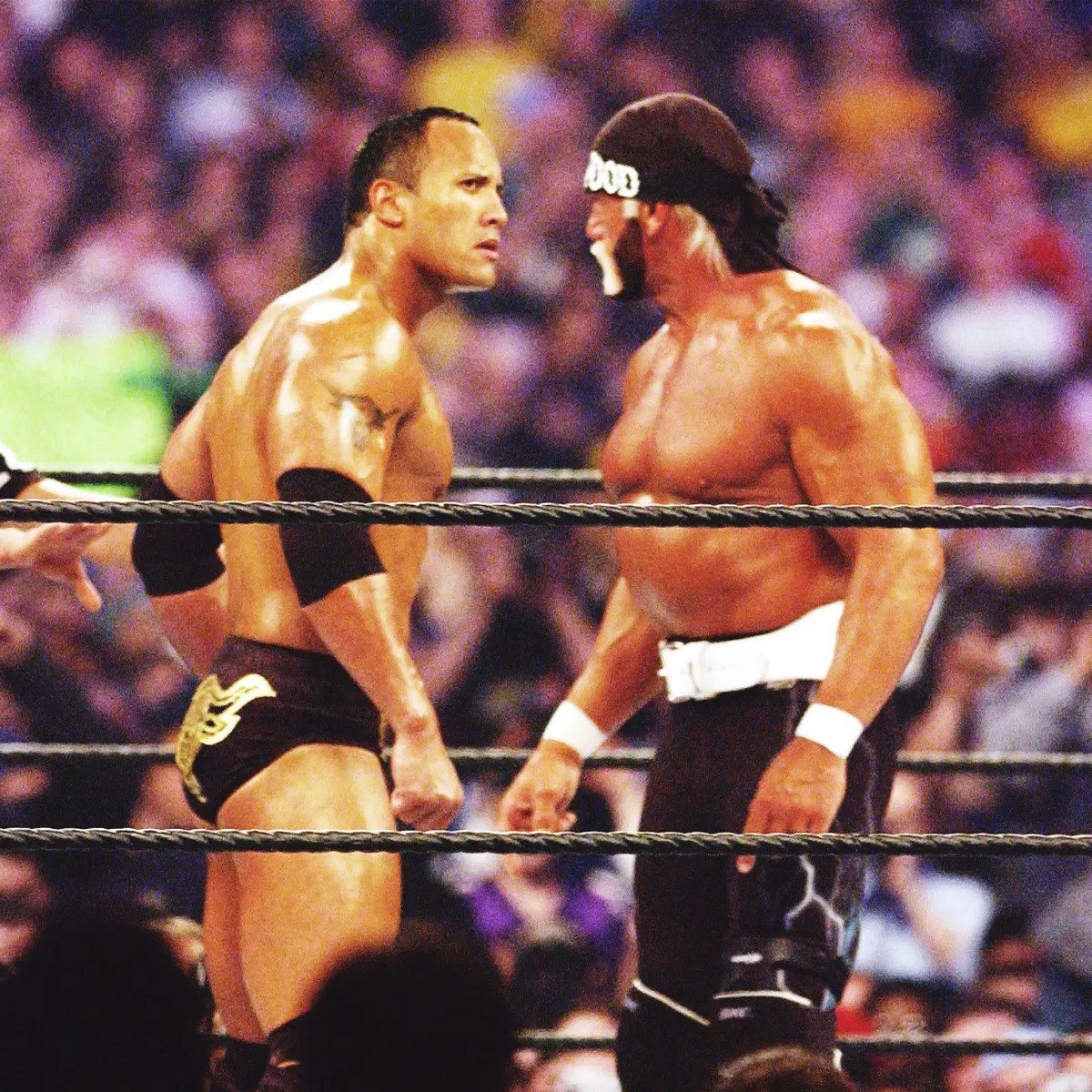
Return to WWE and last big run in 2000s
After a couple of years away from professional wrestling, Hogan would return to the birthplace of ‘HulkaMania’ in 2002, signing with the WWF as part of the NWO. The WWF faithful, who had grown up admiring the Hulkster, were ready to see their guy perform with the new generation’s top-stars.
It would come to ahead at WrestleMania 18 in Toronto where Hogan, entering as a ‘heel,’ was widely cheered by the partisan crowd against the ultra-popular Dwayne ‘The Rock’ Johnson. Hogan would soon capitalise on his new-found resurgence in popularity to gain the WWF Undisputed Championship at Backlash 2002, putting the seal on his return to the very top of professional wrestling.
Bolea, then 49, would go on to work a part-time schedule with the WWE until 2006, where he competed in his final WWE match at SummerSlam, defeating the young prospect Randy Orton.
It was clear Hogan’s propensity to ‘bury’ up-and-coming talent was not lost.
After his WWE return ended in 2006, however, the real-life controversies started mounting for the once uber-popular face of professional wrestling.
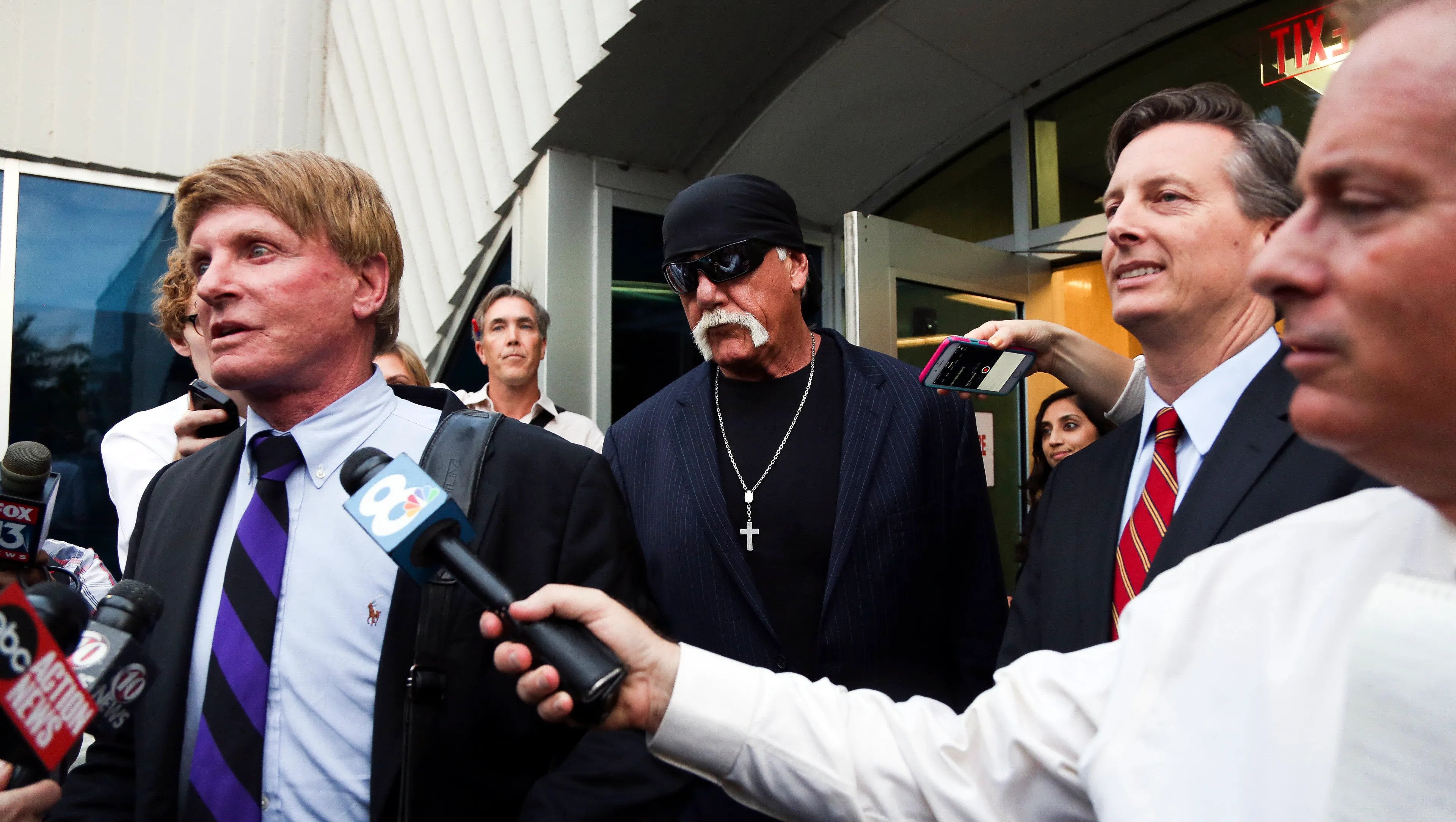
Leaked sex-tape and Bollea vs Gawker
Bollea became the center of controversy in 2012, when a sex-tape featuring him and the wife of radio personality Bubba the Love Sponge was leaked on Gawker. What ensued was an intense legal battle that would have immense ramifications on Hogan’s public persona.
Gawker published a short clip of the video in October 2012, sparking a massive public outcry. In the video, Bubba the Love Sponge is heard off-camera, making a remark about the tape possibly being their “ticket” to retirement.
Bollea would later describe the incident as a “low point” in his life and admitted on the Howard Stern Show that it had devastated him. He expressed regret for his actions, acknowledging that the tape was a result of a poor decision made in the company of friends. In response to the release, Bollea filed a lawsuit against Gawker in 2013, seeking $100 million in damages.
In the lawsuit, Bollea accused Gawker of defamation, loss of privacy, and infliction of emotional pain. The case became a public spectacle, with Bollea claiming that Gawker’s actions had caused severe damage to his reputation. The legal proceedings were further complicated when Hogan was granted access to Gawker’s computer systems in a bid to find more evidence to support his case.
Despite Gawker’s attempts to dismiss the lawsuit, Bollea’s legal team, backed by the financial support of Silicon Valley billionaire Peter Thiel, continued the legal fight.
The case culminated in a major victory for Bollea. In March 2016, he was awarded $115 million in damages by a Florida court, and in August 2016, a judge granted Bollea control over the assets of A.J. Daulerio, the former Gawker editor who was involved in the publication of the video. In November 2016, Gawker reached a settlement with Bollea for $31 million, ultimately leading to the website’s closure.
The leaked tape controversy, however, would not end there. It would soon engulf Bollea into a far bigger spotlight which would have damaging consequences on his lasting legacy.
https://www.youtube.com/watch?v=Eb_7ZCbuBbc
Leaked audio, ‘black rant,’ and firing from WWE
Audio from the leaked sex tape would come back to haunt Bollea in July 2015. It was revealed that the wrestler had made racist remarks against black people, including the use of the racial slur ‘n-word.’
In the recording, Bollea could be heard using the racial slur multiple times. Bollea also admitted in the audio to being “a racist, to a point” whilst expressing disgust at the idea of his daughter dating a black man. The audio was publicised by National Enquirer and Radar Online, causing an immediate media frenzy.
Hulkster was, once again, ousted from the WWE. His contract was terminated on July 24, 2015, and Hogan was also removed from his ongoing judging role on WWE’s Tough Enough reality TV show. The company stated that it was “committed to embracing and celebrating individuals from all backgrounds” and removed almost all references to Hogan from its platforms, including his Hall of Fame listing, his merchandise, and his involvement in the Tough Enough series. His downloadable content (DLC) from the video game WWE 2K15 was also removed, and his character was cut from the upcoming WWE 2K16 game.
The response within the wrestling community was also divided. Whilst some, like Virgil and Dennis Rodman, did defend Hogan based on their previous experience, many called out the Hulkster for his racist comments and expressed disappointment. Mark Henry, a prominent black WWE wrestler, expressed disappointment, stating that he was hurt and offended by Hogan’s comments, and applauded WWE’s firm stance against racism. Booker T also voiced his shock, calling the statements unfortunate.
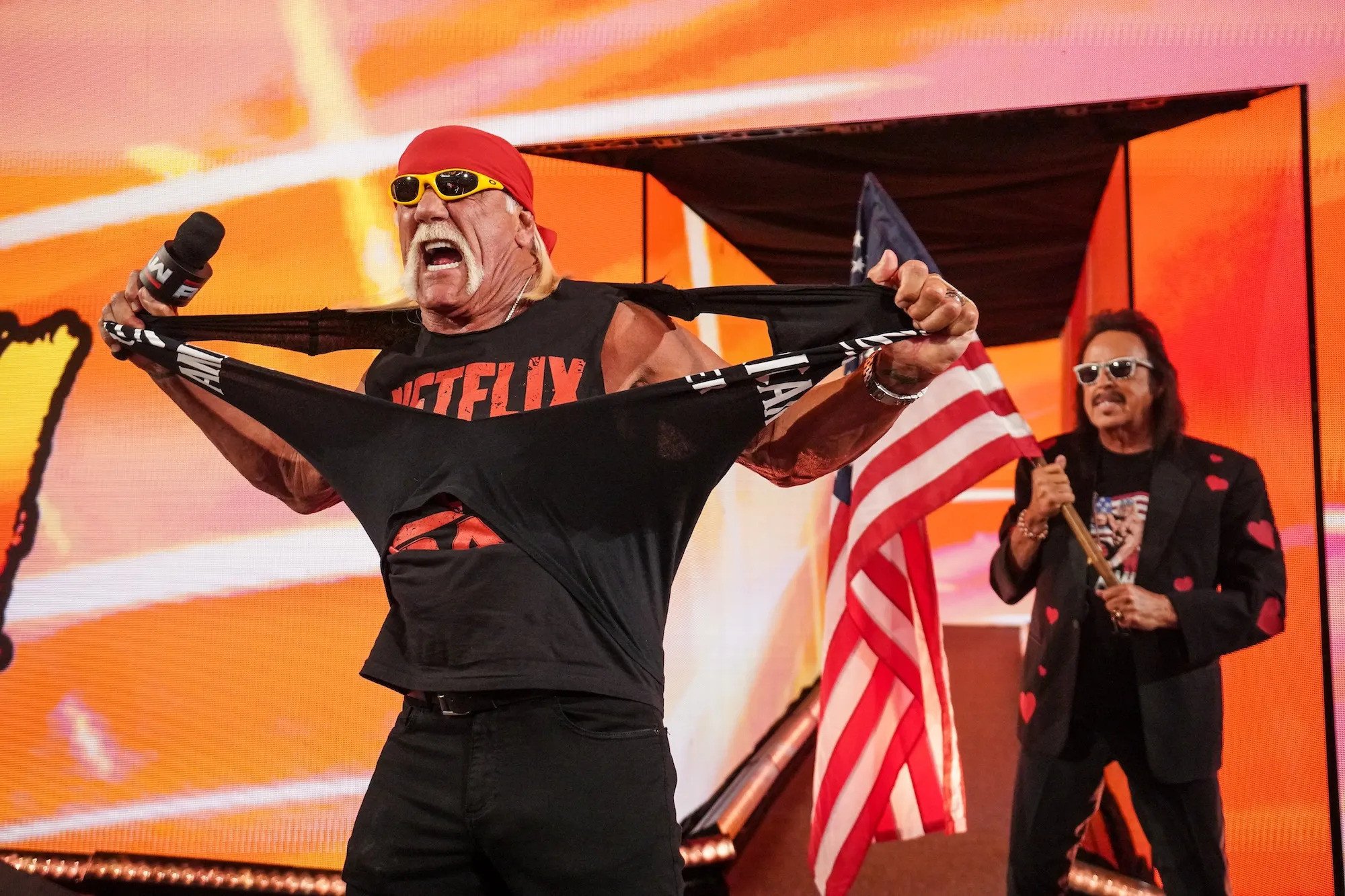
Apology for racist remarks and final return to WWE
After less than three years away from the wrestling, Hogan was brought back and reinstated as a WWE Hall of Famer in 2018. Upon his return, he addressed the controversy surrounding his leaked audio to the WWE locker room.
Hogan’s apology, however, was criticised for not being genuine. It was reported that Hogan had framed his apology around a ‘lesson learned’ approach, with him cautioning WWE wrestlers to be mindful of what they say in an era where anything can be recorded and leaked. It was seen as anything but a genuine remorse for his past comments and an attempt by Hogan to deflect responsibility, leading to many prominent wrestlers to disassociate with Hogan completely.
The New Day, consisting of Kofi Kingston, Xavier Woods, and Big E, released a powerful statement expressing their belief that while WWE had the right to make decisions regarding its Hall of Fame, Hogan’s actions required genuine effort to change before they would accept him. The group emphasised that meaningful reconciliation should be demonstrated through actions, not just words.
Similarly, Titus O’Neil voiced his discontent with Hogan’s apology, claiming it lacked true remorse or a desire for change. O’Neil criticised Hogan’s approach as more of a damage-control tactic than a sincere effort to make amends, stating that Hogan had lost his trust.
Seth Rollins also shared his thoughts on the situation, acknowledging Hogan’s kindness towards him but expressing difficulty in moving past the controversial past actions. Rollins referred to Hogan as “a victim of his own ego” and noted that the lack of full accountability made it hard for him to accept Hogan’s apology.
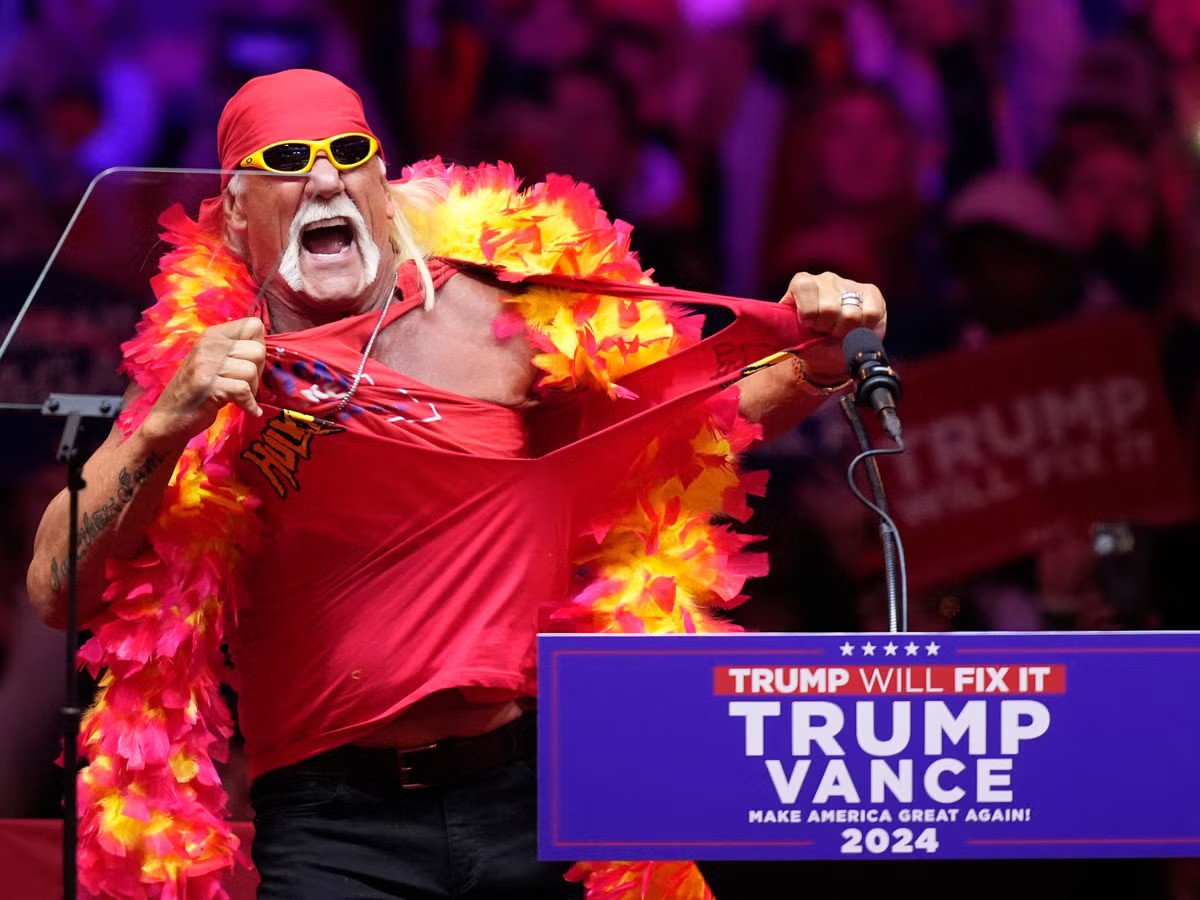
MAGA support and ‘body-slamming’ Kamala Harris
As a prominent resident of the state of Florida, it came as no surprise to many when Hogan endorsed Donald Trump in the 2024 US Presidential Elections. His support and campaigning for Trump, including a widely-publicised appearance at the Republican National Convention, led to an increased-interest in Hogan’s previous controversies.
During the appearance, Hogan cited the assassination attempt on Trump’s life as the main motivator behind campaigning for him, calling him a ‘real American hero.’ In signature Hulk Hogan style, his speech at the convention included him ripping his shirt open to reveal a Trump-Vance tank top, which earned him loud cheers from the audience.
Bizarrely, Hogan also claimed he, MAGA, and Trump were going to “bodyslam” Kamala Harris and the democratic party. He was also pictured celebrating with Trump on inauguration day.
At the time of his passing, Trump posted a tribute to Hogan, saying he was “MAGA all the way” while calling him a “great friend.”
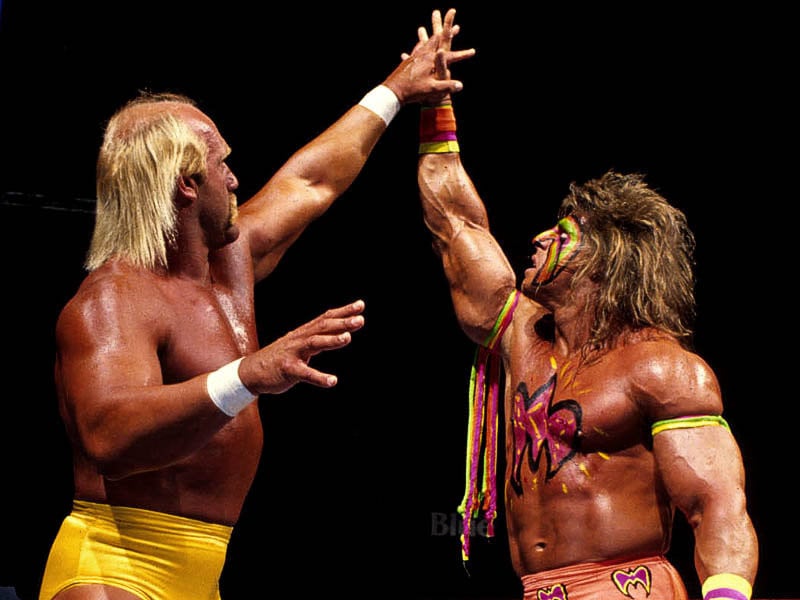
Questionable legacy
Hogan’s death has sparked mixed reactions across social media. Whilst his contemporaries and media personalities have been sending in their tributes for the Hulkster, the general populace seems less forgiving.
A quick glance on X, especially on the feed of prominent black influencers, would prove this to be the case.
Hogan leaves behind a much-debated and controversial legacy, to say the least. His mirage of controversies, especially after his retirement from wrestling, cannot be overlooked. Subsequent attempts at recovering the damage done to his reputation backfired more often than not.
His once uber-popularity in the wrestling business has dwindled with time, especially in the aftermath of Vince McMahon’s ousting from the WWE. Prior to his death, young wrestling fans could either not recall Hogan and his body of work in professional wrestling or simply did not care enough about him.
It is, perhaps, even more ironic now that his very-last appearance on WWE television – the same WWE Hogan ruled for decades and decades – led to him being ‘booed out of the building’ on WWE Raw’s premier episode on Netflix.
At the same time, his impact on the professional wrestling business in undeniable. Hogan was a central figure of not just professional wrestling, but American pop culture in the 1980s. It was on his back that Vince McMahon expanded his empire and changed the landscape of professional wrestling forever.
For fans who grew up supporting the Hulkster, believing in HulkaMania, and eating their vitamins and saying their prayers, Hogan is still, perhaps, the greatest WWE superstar of all time.


